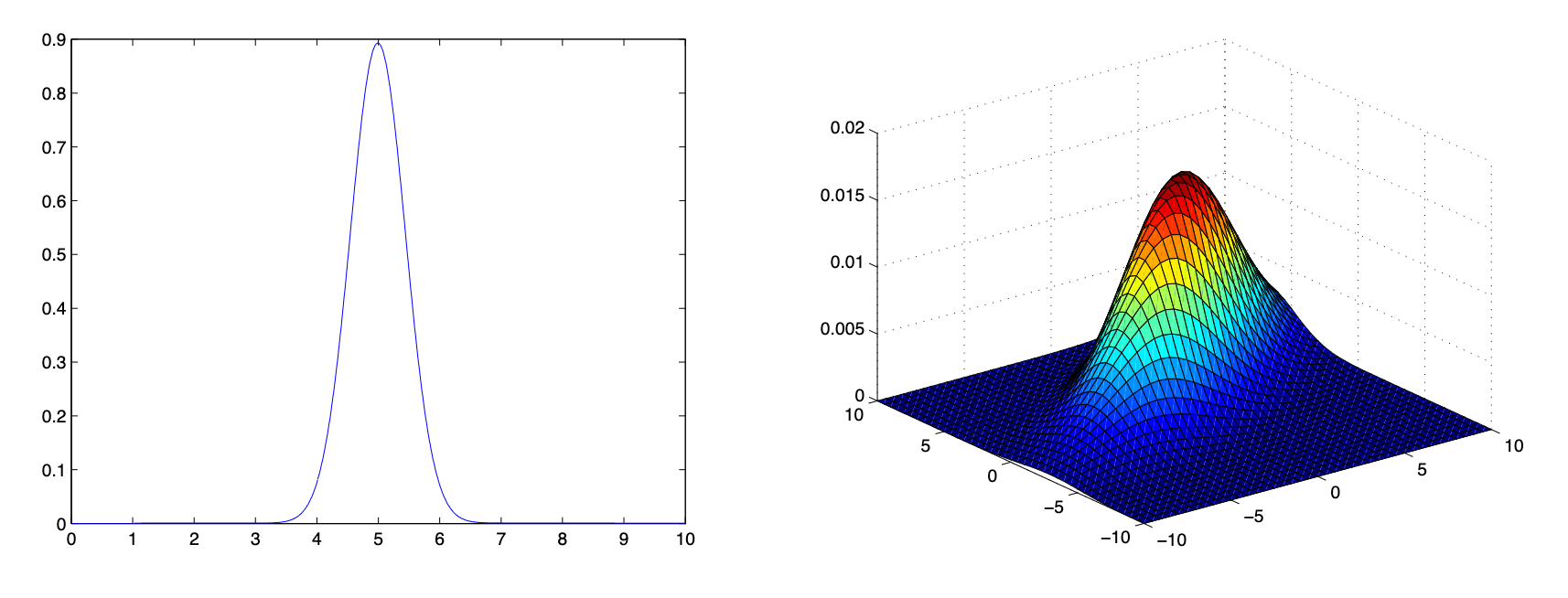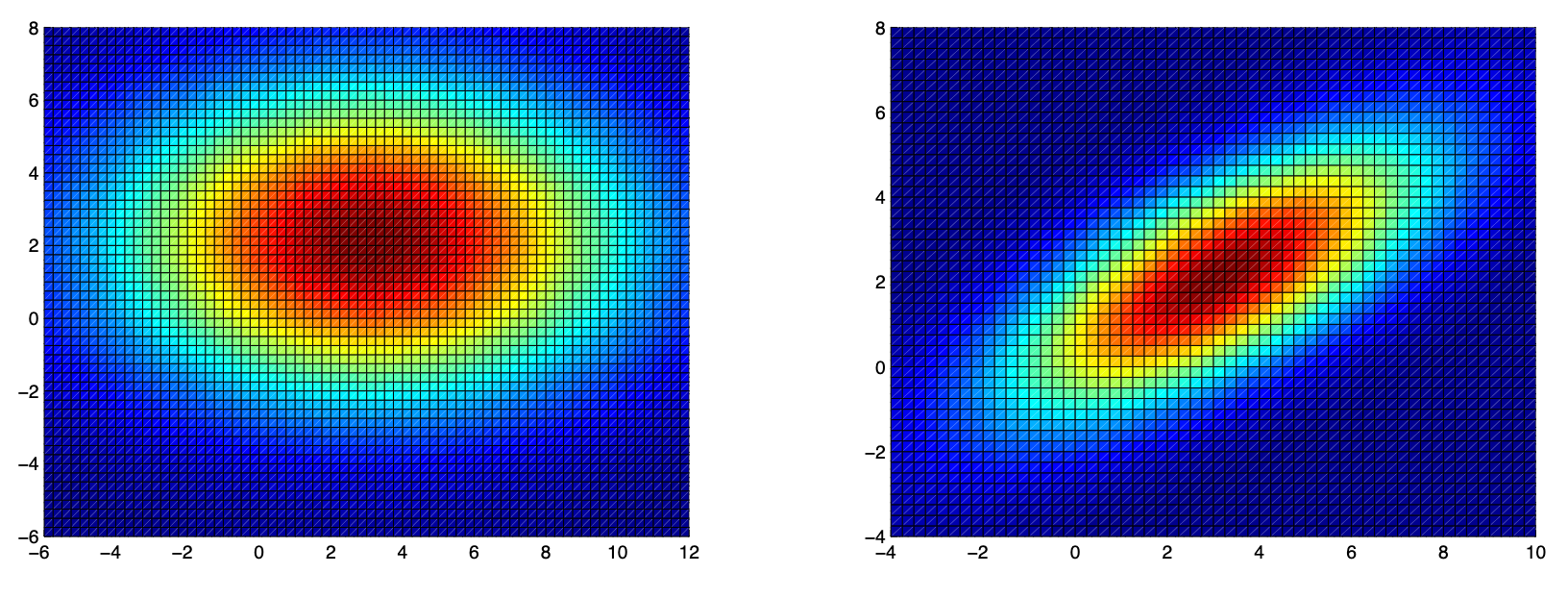Multivariate Gaussian Distributions
Sources:
Notation
The notations of this article is exactly the same as these in Univariate Gaussian Distributions. For the multi variate case, we add additional rules:
The multivariate normal distribution of a
The PDF1
We use underline to show the importance of some symbols. For instance,
Multivariate Gaussian distributions

Figure 1: The figure on the left shows a univariate Gaussian density for a single variable X. The figure on the right shows a multivariate Gaussian density over two variables X1 and X2.
The multivariate normal distribution of a
The PDF is:
where
Note:
Isocontours
One way to understand a multivariate Gaussian conceptually is to understand the shape of its isocontours. For a function
Shape of isocontours
What do the isocontours of a multivariate Gaussian look like? As before, let's consider the case where
Let's take the example of
The PDF is
Now, let's consider the level set consisting of all points where
Defining
Equation

To get a better understanding of how the shape of the level curves vary as a function of the variances of the multivariate Gaussian distribution, suppose that we are interested in
The figure on the left shows a heatmap indicating values of the density function for an axis-aligned multivariate Gaussian with mean
The figure on the right shows a heatmap indicating values of the density function for a non axis-aligned multivariate Gaussian with mean
First, observe that maximum of Equation (4) occurs where
From this, it follows that the axis length needed to reach a fraction 1/e of the peak height of the Gaussian density in the
Linear Linear transformation interpretation
Theorem: Let
Proof:
- As before said, if
- Furthermore, if
- Consequently, the theorem states that any random variable
Probability density function↩︎